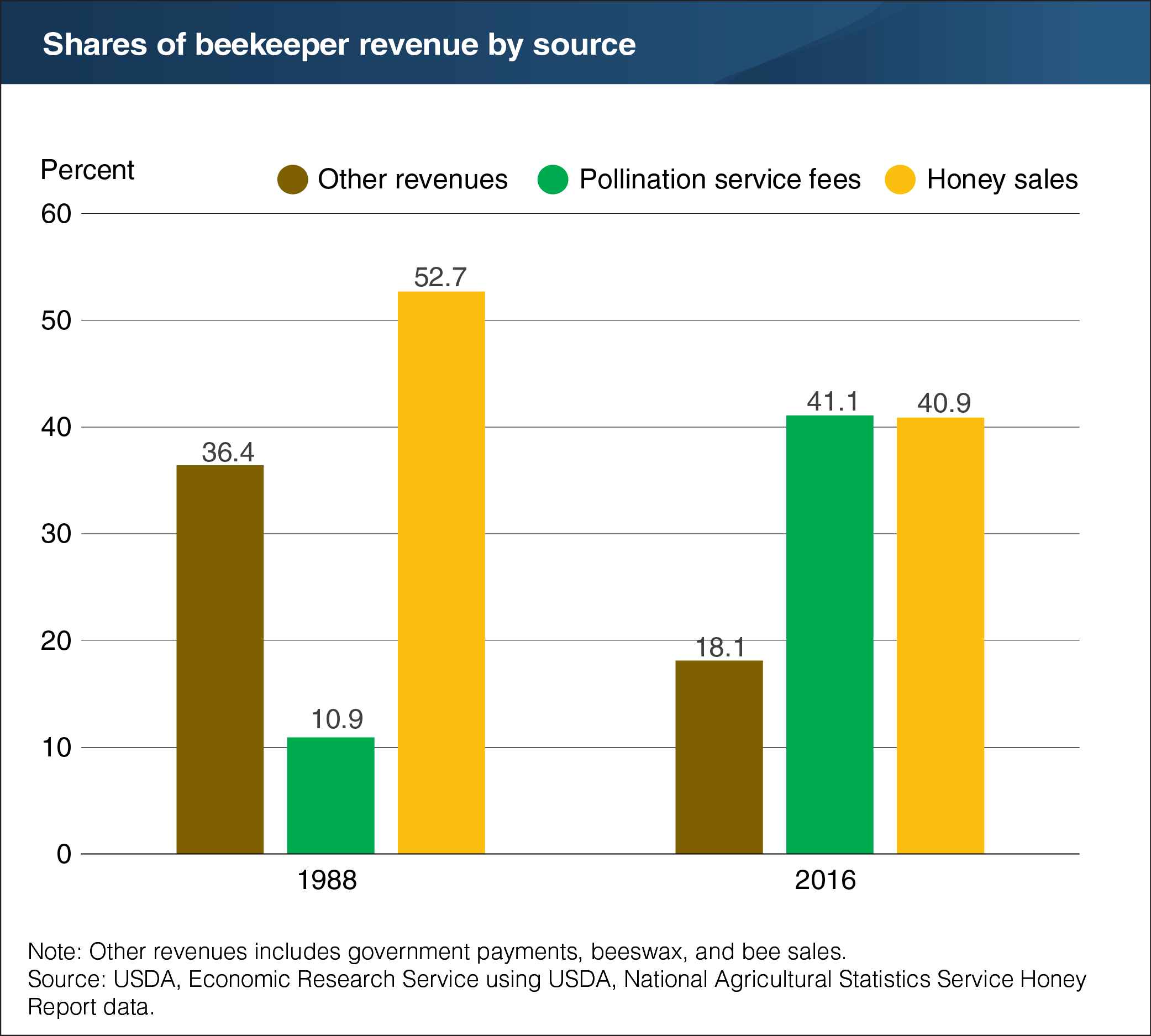Pollination service fees now roughly equal to honey sales as a share of revenue for beekeepers
- by Peyton Ferrier
- 6/18/2018

The essential role of honey bees (Apis mellifera) for crop pollination is well known in modern agriculture, but for most of human history honey bees were kept primarily for honey production. In 1988, pollination services—renting out bee colonies to pollinate certain crops—produced only a small share of beekeeper revenue, at just under 11 percent. Since then, the value of pollination services has increased sharply. In 2016, pollination service fees represented over 41 percent of total beekeeper revenues and exceeded honey sales. The primary driver in the value increase has been growing demand for almonds, which were responsible for 82 percent of all pollination service fees in 2016. Recent data show almond farmers paid $165 per colony rented over the several-week-long pollination season in 2016, roughly triple the average of $55 for other crops. This chart appears in the ERS Infographic, Pollination Service Fees, released in March 2018.

